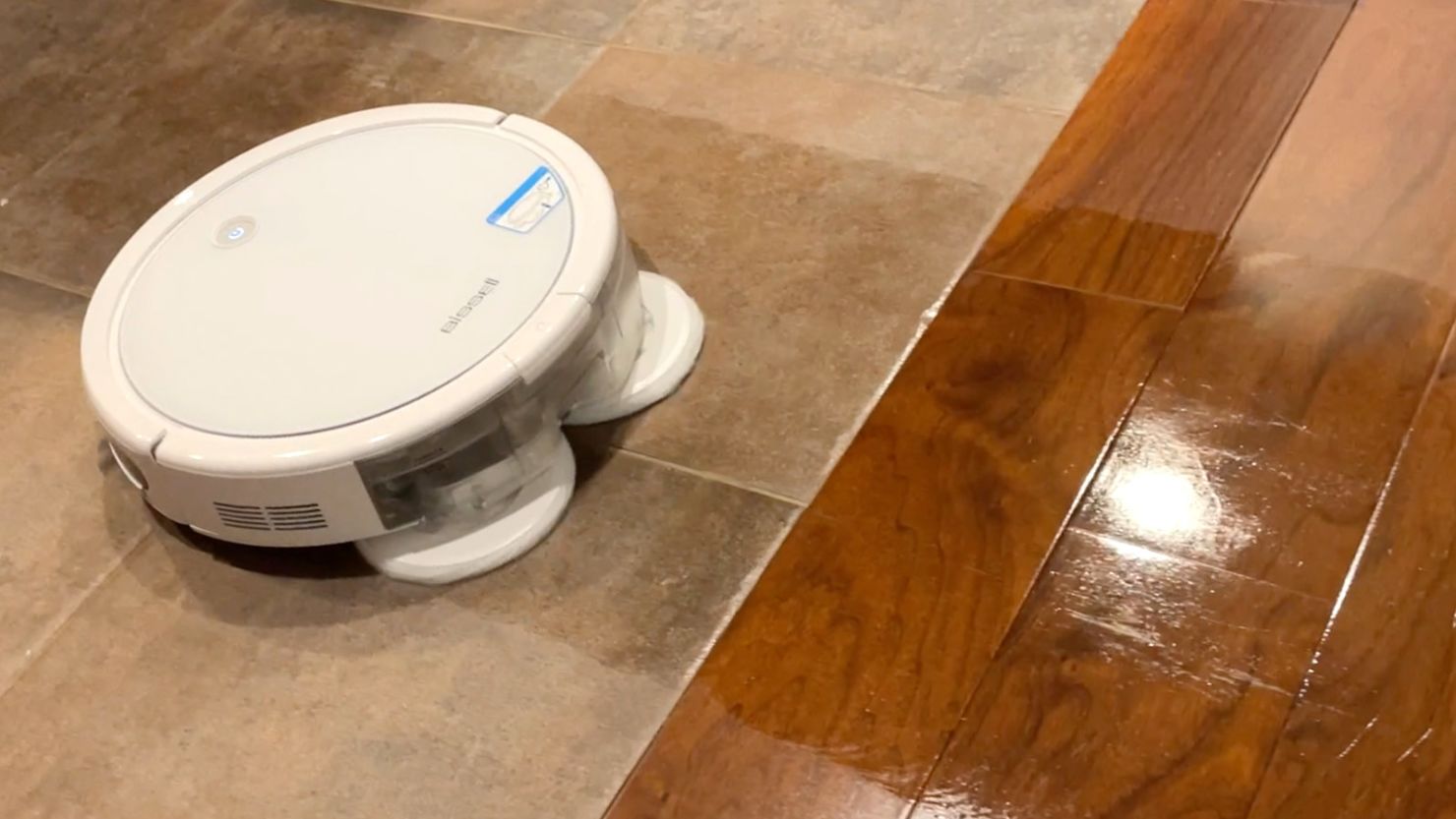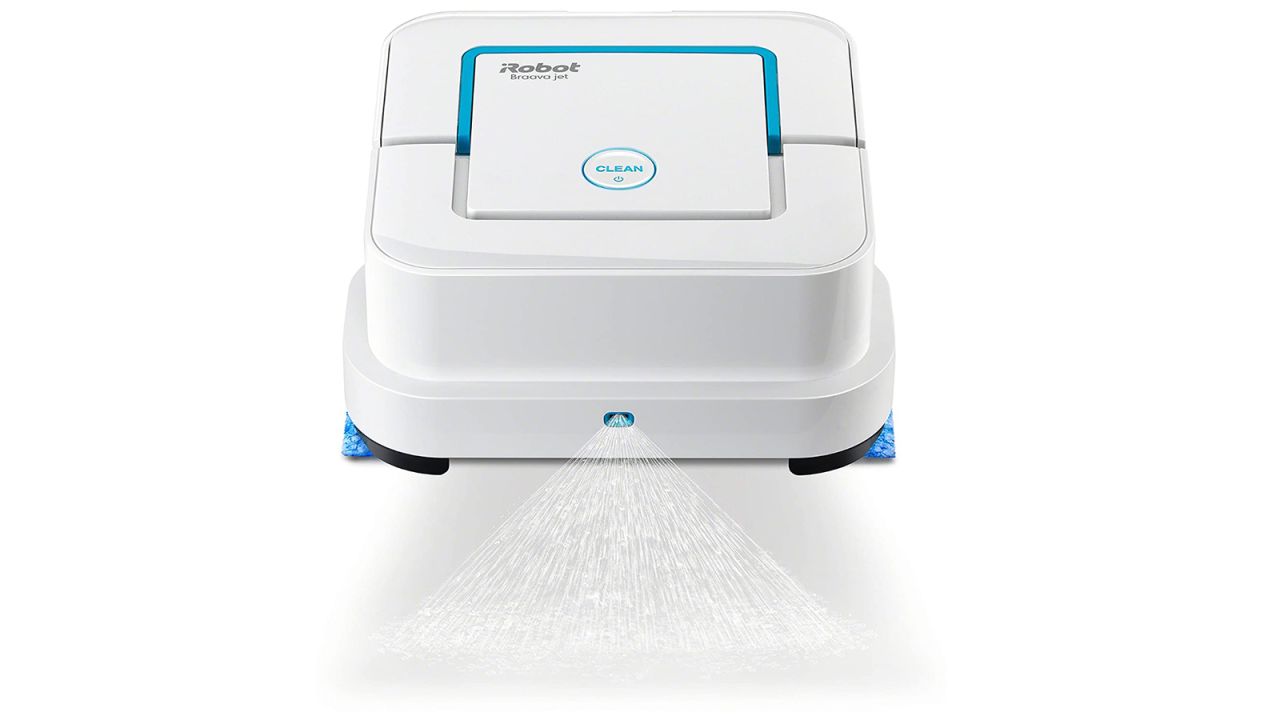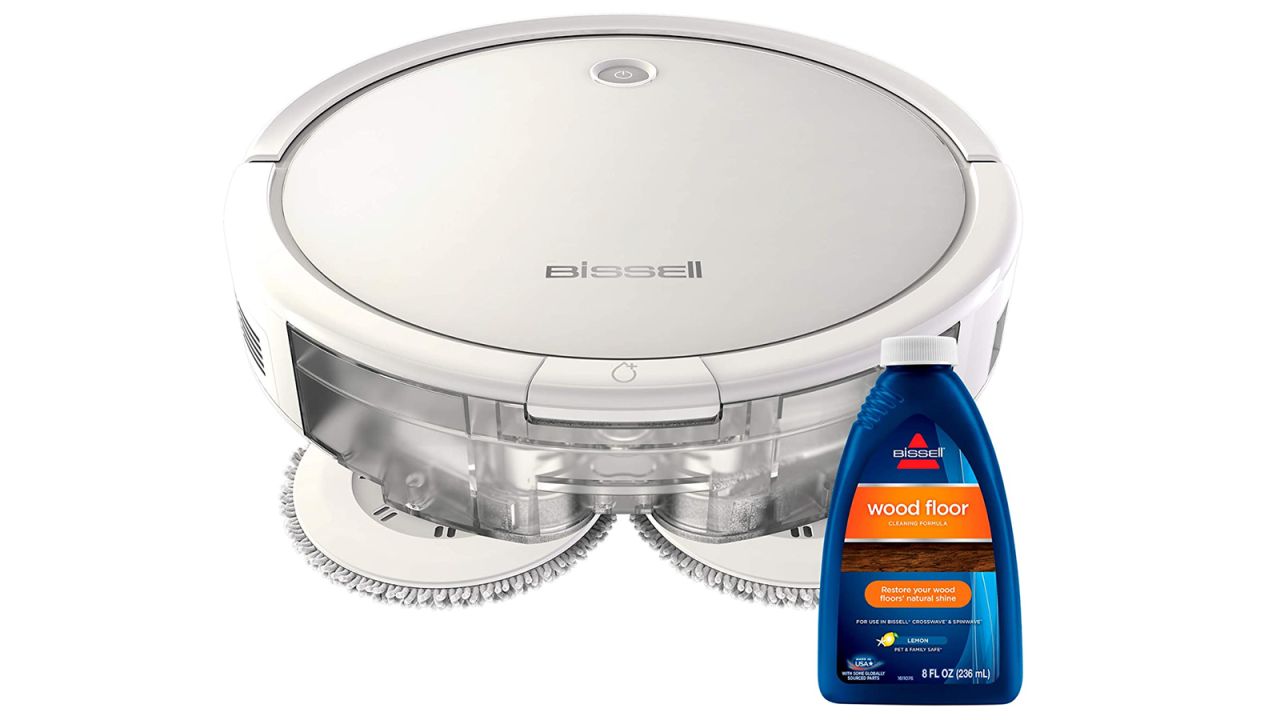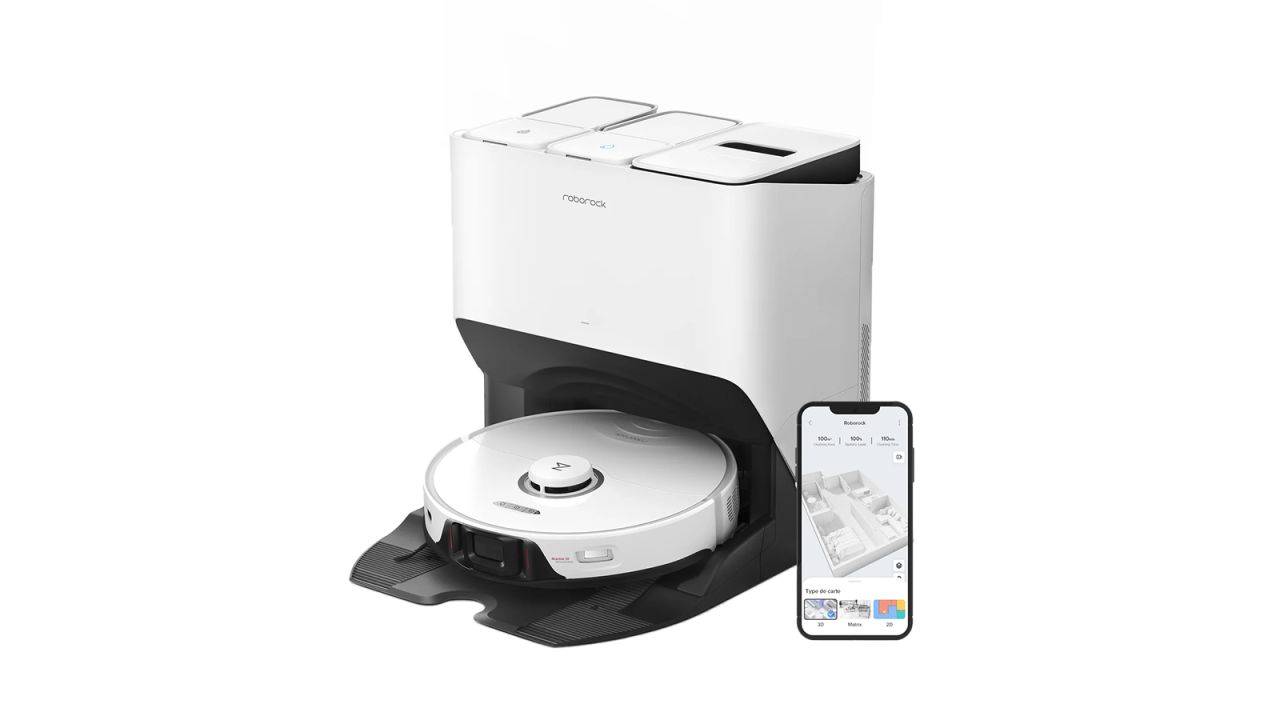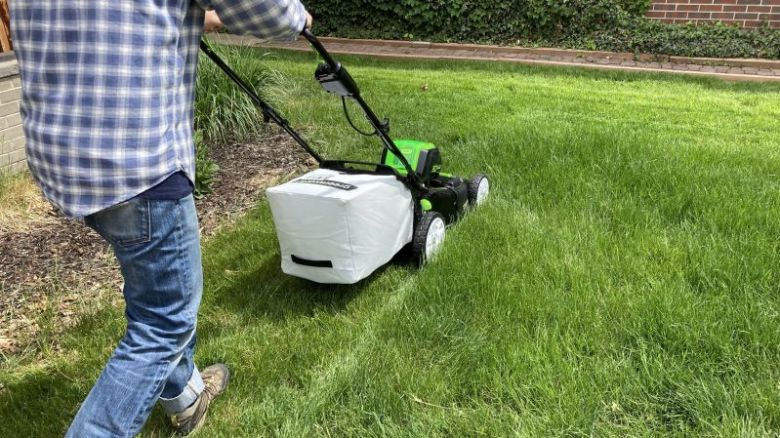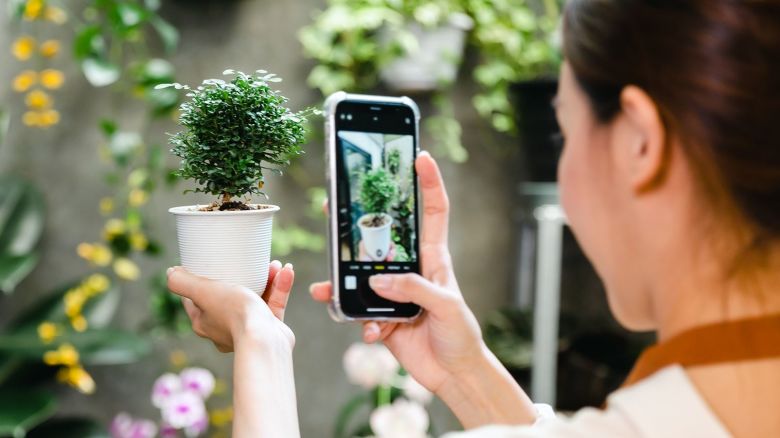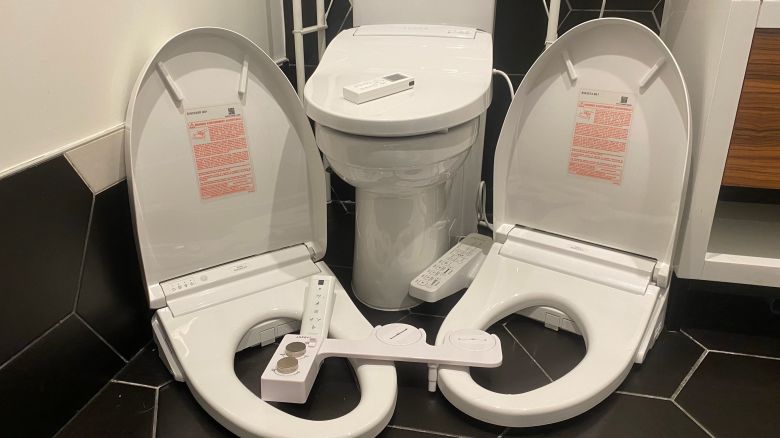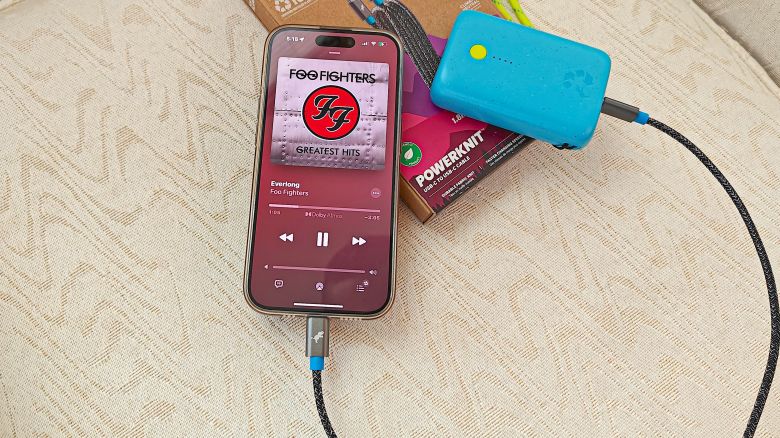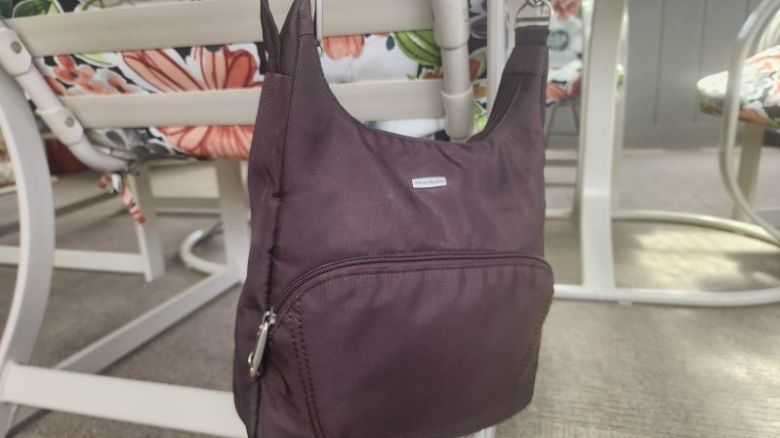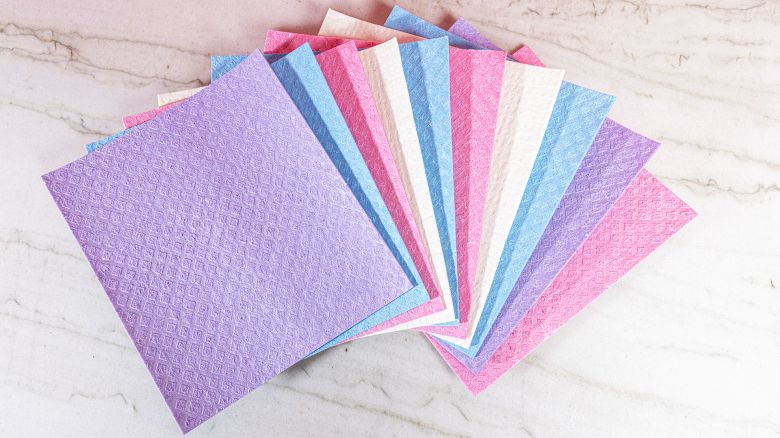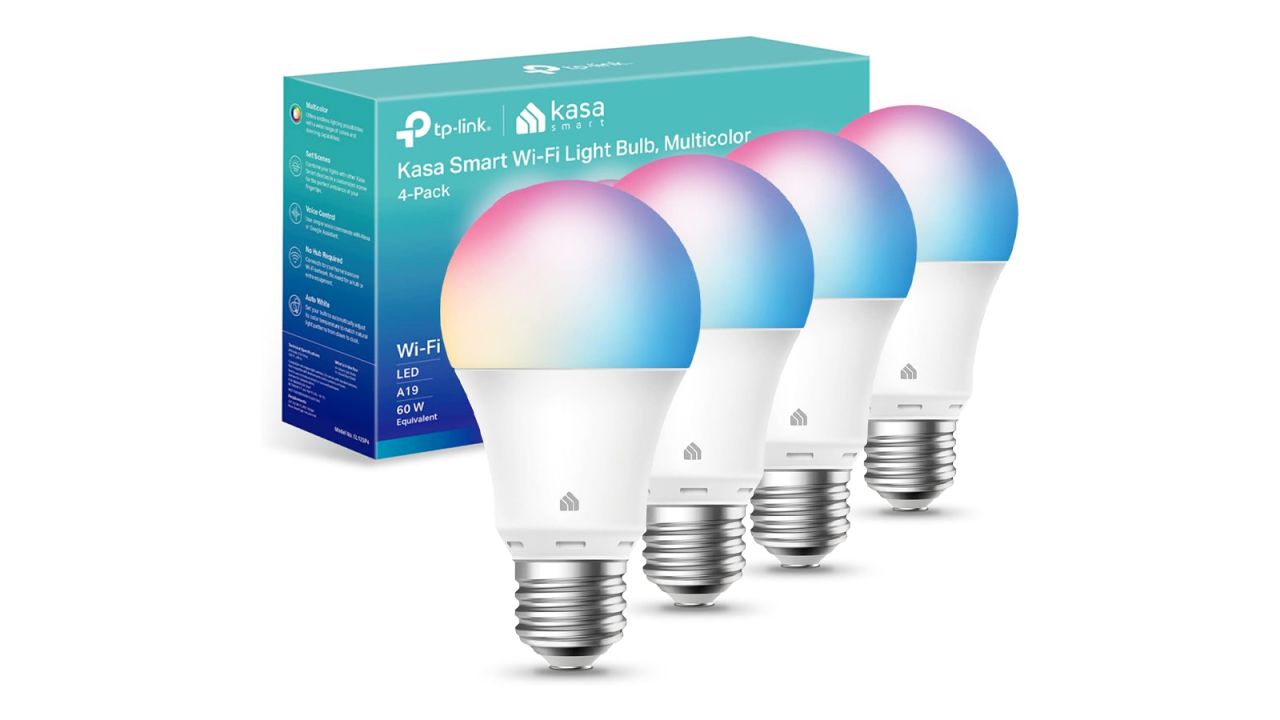Editor’s Note: Since our initial testing, the iRobot Braava Jet 240, our pick for best overall robot mop, has been discontinued. We’re undergoing a new round of testing to find updated picks for this story.
A robot mop — much like a robot vacuum, but armed with a water tank and microfiber cloths or mop pads that wipe your floor in place of or in addition to a dust bin — can be incredibly useful as part of your regular cleaning.
We tested 12 models — three dedicated mops and eight mop-vacuum hybrids — to find the most effective and efficient automated assistants to help you keep your floors clean.
The Roborock S8 Pro Ultra comes as close to autonomous cleaning as we’ve seen yet. The two-in-one robot floor cleaner strikes a balance between premium cleaning features, like high suction power and excellent mapping and navigation, and adds in a hot-air mop dryer — making it the best combo robot floor cleaner you can buy right now.
Best robot mop: iRobot Braava Jet 240
Currently unavailable at Amazon
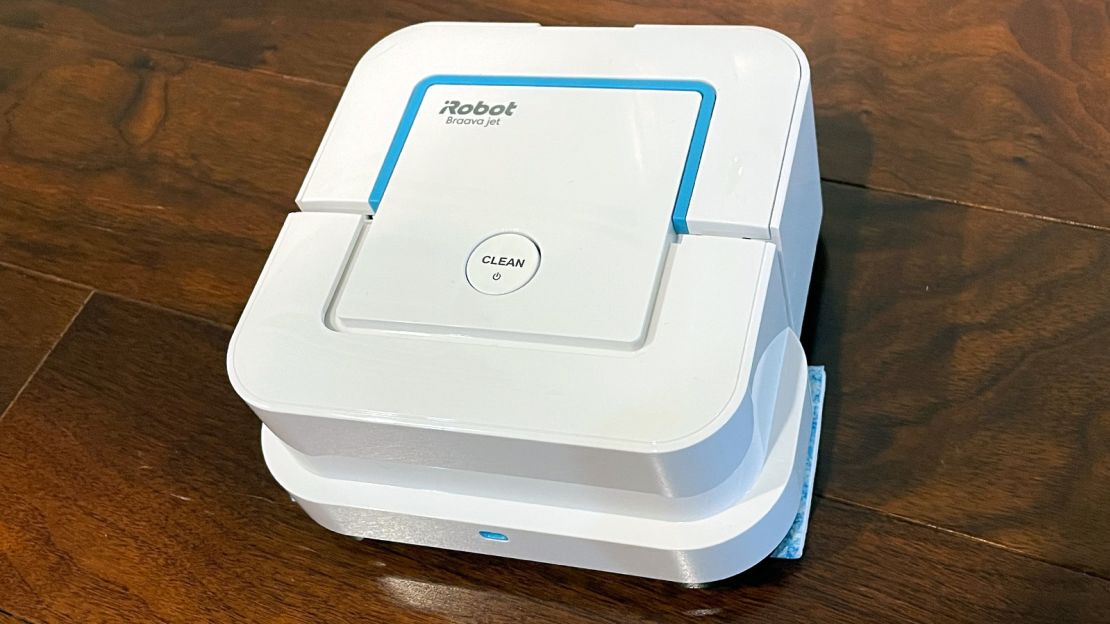
For the price, the iRobot Braava Jet 240 is the best robot mop we tested. For keeping your hard floors neat and tidy without you having to manually mop every day, the iRobot Braava Jet 240 is a handy, affordable tool to have in your cleaning closet.
The iRobot Braava Jet 240 won our hearts with its compact design before we even started mopping. It’s small, lightweight (3 pounds) and has a handle so you can easily carry it from room to room. Its low 3.3-inch profile allows it to get under furniture and into hard-to-reach places, while the squared-off edges mean it can get into corners and along baseboards in a way that round robots just can’t. It even did a good job maneuvering around a toilet base. It also uses a removable rechargeable battery so there’s no need to take up valuable floor space with a charging dock.
Despite its small size, the Braava Jet 240 delivered a big clean. With a vibrating cleaning head (like our favorite affordable hybrid, the Bissell SpinWave) and the ability to use cleaning solution (iRobot’s solution only) in the water tank, the Braava Jet 240 actually mops the floor rather than simply using a cloth to wipe it down with water. The robot uses proprietary cleaning pads (available in both disposable and washable varieties) that, when attached to the bottom of the robot, tell it which cleaning mode to begin. There are three cleaning modes to choose from: dry sweeping, damp sweeping and wet mopping.

Even though the robot isn’t Wi-Fi-connected and lacks smart features (you can, if you like, control the robot via Bluetooth from the iRobot Home app), it uses an efficient cleaning pattern that covers the whole kitchen floor, especially along the baseboards. The Jet 240 impressively maneuvered around a hallway carpet, cleaning the open floor alongside it while avoiding ever going onto the carpet. This is something many of the more expensive, advanced hybrid robot mops could not do. If you need to, you can create a virtual “wall” to confine the Braava Jet 240 to a single space just by pushing two buttons on the robot itself — very convenient indeed.
It did great on tile and hardwood floors, leaving no streaks as it cleaned up cat-litter-dusted paw prints, though on a tile floor we noticed some water accumulation on some of the grout, as the cleaning pads don’t apply enough pressure to reach into crevices. It dried quickly but it’s not clear the grout is getting as clean as the floor is. And while it couldn’t handle dried dirt and tougher stains as well, none of the robot mops excelled in that area.
Best robot vacuum and mop combo: Bissell SpinWave 2-in-1 Robotic Mop and Vacuum
$400 $220 at Amazon

The Bissell SpinWave 2-in-1 Robotic Mop and Vacuum is the only robot mop we tested in this category that uses dual spinning pads, which were far more effective in our testing than the standard flat mop pads employed on the other models. The SpinWave did a great job getting up dirt and splatter spots from my tile kitchen floor and didn’t leave streaks on the hardwood floors. It was the only model that didn’t make me feel like my kitchen had just been lightly Swiffered with a damp cloth.
While all the other robots we tested call for using only plain water in the water tank, the SpinWave can use cleaning products, and Bissell includes a trial size bottle of multi-surface floor cleaner in the box (you can buy other floor- and task-specific formulations through the Bissell app or online, like pet multi-surface with Febreze, wood floor cleaner and one for tough messes and odors).
The SpinWave has sensors to help it automatically detect and avoid carpeting when it’s mopping. This wasn’t perfect — it did end up mopping onto the edge of a dining room carpet — so if you’re using it in an open-floor-plan home with a mix of hardwood or tile surfaces and carpeting, we recommend keeping an eye on it if you’re running it through the whole house (we carried it from kitchen to bathroom for mopping sessions).
You’ll need to swap tanks (the robot comes with a dry tank for vacuuming and a wet tank for mopping) to use the SpinWave as a vacuum and a mop. You can’t do both at the same time as you can with some of the more expensive models (though it does pick up some solid debris while mopping). The circular mop pads attach to the bottom of the water tank and are easily removed for washing.

In vacuum mode, the SpinWave uses a rotating brush roll and dual spinning edge brushes on the bottom to help pick up debris and pet hair in vacuum mode. I found it did a pretty good job on low-pile carpet and hardwood floors. Three suction power levels — low, mid and max — are available.
While the SpinWave may lack the more advanced features found on pricier models, like mapping and the ability to set virtual keep-out zones, The Bissell app gives you access to some connected features like remote controls, a selection of cleaning modes and power levels and scheduled cleaning. You can also set the SpinWave to mop in auto mode, and the robot will run straight rows, or you can use spot mode for concentrated messes and spills.
If mopping the floors is something you do regularly, and you’re looking for a hybrid model that doesn’t cost a fortune, the Bissell SpinWave 2-in-1 Robotic Mop and Vacuum is the right robot for you, delivering one of the best mopping experiences — and certainly the best experience for the money — we found in a robot mop-vac.
Best luxury robot vacuum and mop combo: Roborock S8 Pro Ultra
$1,600 at Roborock and Best Buy
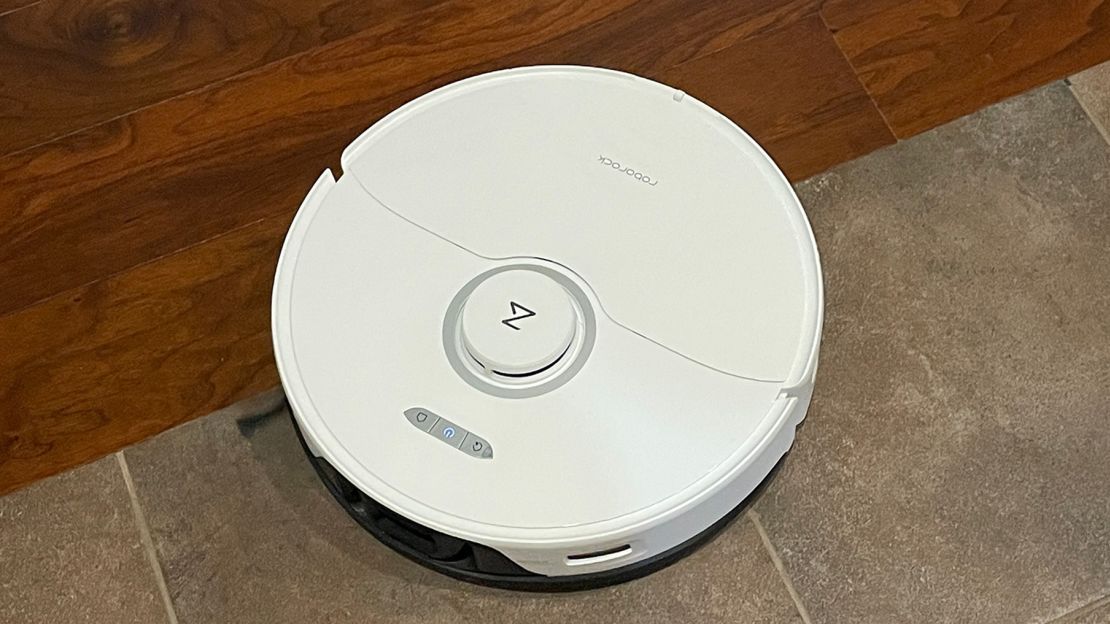
The Roborock S8 Pro Ultra, the company’s latest flagship combo mop/vacuum robot floor cleaner, comes as close to autonomous cleaning as we’ve seen yet.
This feature-rich, two-in-one robot floor cleaner is a much-improved version of last year’s Roborock S7 MaxV Ultra. It strikes a balance between premium cleaning features, like high suction power and excellent mapping and navigation, and adds in a hot-air mop dryer — making it the best combo robot floor cleaner you can buy right now.
Roborock impressed us with the streamlined look of the self-cleaning docking station, called the Rock Dock. While it’s still large, at 17 inches wide and tall and 20 inches deep, it looks less obtrusive than the S7 version, which we found overwhelming and unattractive. Roborock also introduced a white version of the S8 which looks much sleeker and will blend into a room better than the black version we tested.
The Rock Dock, where all the automated action takes place, has a similar design to the Ecovacs Deebot X1 Omni. It houses three plastic tanks; one for auto-emptying the dirt from the robot’s dustbin into a bag, one for auto-emptying the dirty water, and one that holds the clean water used to refill the robot for its next cleaning run.
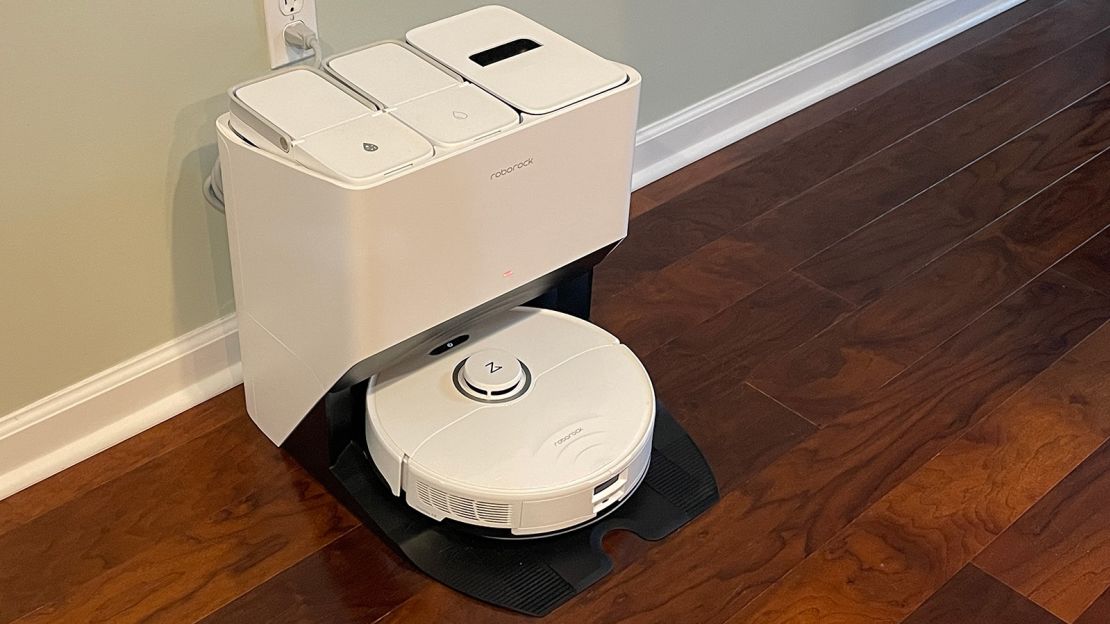
But the S8 Pro Ultra really shines after it empties the robot’s debris. High speed cleaning brushes scrub the mop head with clean water from the reservoir tank, while the dirty water is extracted — and clean water is added to the robot for the next run. Then, the new, built-in hot air dryer goes to work drying the mop head so it won’t get smelly or moldy.
In testing, the mop pad got clean enough, but we did take it off the robot and toss it in the wash every week or so. And the dock is not entirely maintenance free — the bag that holds the dirt and dust holds about 7 weeks’ worth of debris. However, changing that is as simple as picking it up and tossing it in the trash and putting in a new one. Same for adding clean water to the tank and emptying the dirty water tank (which you’ll do every 2-3 cleaning cycles).
The best vacuums can pick up dust and debris from hard floors as well as carpeting and the Roborock S8 excelled at this. With a 6,000 Pa rating it has the most suction power of any robot vacuum we’ve tested. That’s 900 Pa more than the S7 and 1,000 Pa more than the Ecovacs X1 Omni. In our testing house it did a great job picking up fine dust, pet hair and cat litter.
Roborock seriously upped the mopping power of the S8 as well, increasing the vibration area so the mop pad can now clean a wider area as well as apply consistent pressure. While other robot mops we tested left us feeling like we were dragging a wet Swiffer across the floor, this uses firmer, higher-speed scrubbing and was able to easily clean up dried ketchup spots from the tile kitchen floor.
We’ve always liked Roborock’s VibraRise system, which allows the robot to automatically detect carpeting and lift the mop up to 5mm off the floor. But the newest system, which all happens inside the robot, is even more convenient. While the robot is mopping, the dual brush rollers internally raise up 6mm — so nothing from the potentially dirty rollers winds up on the freshly mopped floors. Even better, both the mop head and the brushes rise up simultaneously when the robot travels back to the dock. This is the first we’ve seen of a feature like this in any robot we’ve tested.
While we still think the iRobot J7+ has the best navigation of all the robot vacuums, the S8 Pro Ultra does an excellent job of avoiding obstacles and furniture. Instead of a camera for obstacle recognition, the S8 uses 3D light and an infrared imaging camera to help identify and avoid obstacles such as power cords, sneakers and even pet waste. But it did miss just a few things left in its path making it one area where it didn’t beat the competition.
Of course, the high price tag of this $1,600 robot floor cleaner makes this more a luxury than a need, but for those who can afford it — the total package of a streamlined, hands-free docking system, the excellent cleaning performance and the robot’s ability to lift up the mop pads as well as the roller brushes earns the Roborock S8 Pro Ultra the top pick as best luxury robot vacuum and mop combo.
Is a robot mop worth your money?
If you’re looking to save the effort of regular manual mopping and you have a lot of hard floors, a robot mop can help you keep things clean much in the way a robot vacuum can. Like a robot vacuum, a mopping robot is best thought of as a way to make weekly or monthly cleanings easier rather than as a full-on floor care solution. Like their single-purpose vacuuming cousins, even the most high-tech robot can’t reach every corner of your home and will not replace your full-size canister vacuum or upright vacuum.
And no mopping robot is going to get your floors as clean as a handheld mop or sponge and a little elbow grease. There’s not a whole lot of scrubbing taking place, for one thing (think Swiffer more than mop), and the majority won’t pick up sticky, greasy messes since they are only using water to clean. They do help, but you have to be realistic about your expectations.
Hybrid robot mop-vacuums are worth it if you lack the space for both devices. All of these will work as typical robot vacuum cleaners, picking up pet hair from the floors and low pile carpeting, even under furniture, and will mop your hard floors as well, keeping the house tidy. All of the models we tested except for the most expensive occasionally mopped our carpets (if we wanted to wet-clean those, we’d rather have a carpet cleaner), so they require supervision if this is a concern, and you might want to plan on carrying them to locations where they are needed.
Now that the next generation of home cleaning robots has entered the field, we wouldn’t recommend spending more unless you can really afford one of the next-generation models, with more complete base stations and more elaborate automation, mapping and location features.
Mapping technology is a pain point for many of the last-generation high-end robots (like the Ecovacs Deebot T8+ and Roborock S7+) and you can’t use the high-end features you’re paying for until the mapping is done. The good news is that the next-gen robots are superb at mapping, so if you want all those features and obstacle avoidance as well as the ability to avoid carpeting while mopping, splurge on the newer Ecovacs Deebot Omni X1 or Roborock S7 MaxV Ultra. Otherwise, stick with the far less expensive iRobot Braava Jet 240, or if you want something that also vacuums, get the Bissell SpinWave.
These more-advanced hybrid mop vacuums, like the Ecovacs Deebot X1 and Roborock S7 MaxV Ultra, really do perform as advertised, offering hands-off autonomous house cleaning once you set them up (though as with the cheaper models, you’ll still have to take care of periodic deep cleaning the old-fashioned way). But if more hands-off cleaning is what you’re looking for, these might be worth the splurge. You just need to figure out which of their features are more important to you.
If you’re interested in the most effective robot mop — say you have more hard floors than carpets and don’t mind attaching the mopping pads when you want to mop — the Ecovacs Deebot Omni X1 has more useful features, like the ability to self-dry the mopping pads and an on-board voice assistant for robot control.
If you have lots of low-pile carpeting and want a robot that’s a good vacuum and can take care of a smaller amount of mopping on a single pass through your house without having to swap out tools, get the Roborock S7 MaxV Ultra, which can lift its mop while it goes over the carpets.
How we tested
We looked at 12 models with a wide variety of features and price points and at two more full-featured next-generation units, which claim to do it all: mop, vacuum, empty the dust bin, refill the water tank and wash the mop for you.
With each robot, we looked at how well it mopped and vacuumed, and how easily it transitioned between the two. Wi-Fi-connected robots were also judged on the effectiveness and ease of use of their apps, how well they did at mapping the house and how easy it was to define and use virtual boundaries.
Each model was given multiple runs across mostly low-pile carpeting and hardwood floors in an approximately 1,500-square-foot home with two furry cats. We looked at how well they mopped the floor and whether they were able to detect and avoid carpeting.
Other robot mop-vacuums we tested
Yeedi Cube
$700 500 at Amazon
The Yeedi Cube robot floor cleaner is a budget friendly, hybrid mop/vacuum with many of the high-end features of our top luxury pick, the Roborock S8 Pro Ultra, at nearly half the price. Like its more expensive competition, including the Ecovacs X2 Omni, the Yeedi Cube vacuums and mops your floors, then returns to the base to empty the debris, extract the dirty water and clean the mop pad.
However, you’ll have to give up some of the hands-free cleaning experience you get on those higher end models. The Yeedi’s bristle roller brush often got tangled with hair and needed to be cleaned more often, and instead of housing the clean water tank in the docking base alongside the dirty water tank, Yeedi added a transparent removable water bin to the top of the robot. While this allows for a smaller, less obtrusive base station, (14.75 inches tall, about six inches shorter than the Ecovacs X2 Omni) it also means you can’t just tote the bin to the sink to fill it up. Instead, you have to undo the toggle that holds it securely in place, remove the bin, remove the water tank plug, then bring it to the sink and fill it.
However, the tank does hold more water than the ones fitted inside the robot, and Yeedi added a convenient handle to the top of the tank which made it a lot easier to simply pick up and carry the entire device to another location in the house when needed. We were also happy that the robot wasn’t too tall to fit under couches and furniture.
The Yeedi Cube cleans well, using ultrasonic vibration when mopping to scrub floors and has 4300 Pa suction power with three different levels. Laser-aided navigation made it quick and easy to map the house, but the robot failed to detect some objects in its path.
If you’re willing to give up some of the hands-free convenience of the Roborock, the Yeedi Cube, with its innovative water tank and design, is a capable robot floor cleaner with a more affordable price tag.
Ecovacs Deebot X2 Omni
$1,500 $1,045 at Ecovacs
The flagship Ecovacs X2 Omni is one of the best luxury robot vacuum and mop combos on the market, improving on last year’s impressive X1 Omni with a new square design. But, in our head-to-head testing, it stumbled in its navigation abilities compared with our top pick, the Roborock S8 Pro Ultra. The robot got stuck several times and failed to go around some objects in its path.
The X2 Omni has a new dual laser lidar navigation system which relocated the sensors from the top to the side of the robot. While this reduces the need for the dome on top of the robot, (the X2 is now 3.7 inches tall compared to 4.1 inches on the X1 Omni) we can’t help but wonder if this also affected its precise navigation abilities.
The square design allows for a wider roller brush but we think the new lifting DuoRoller brushes on the Roborock S8 Pro Ultra give it a slight edge in vacuuming over the similarly priced X2 Omni.
Beyond that, the two powerhouse robot floor cleaners are evenly matched in almost every other way, including increased suction power on the X2, (8,000 Pa) a streamlined auto empty and clean dock that washes and dries the mop heads and retractable mops so it can vacuum and mop in one cleaning run without getting carpets wet.
While the X2 Omni’s pads lift higher inside the robot (15mm vs. 5mm) neither of them did a great job keeping our carpets from getting damp so if you have high pile carpeting or rugs, keep this in mind.
It’s an expensive luxury floor cleaner, and if you don’t mind getting your hands wet or dirty cleaning the mop pads and emptying dirty water from the robot, you can save some money getting an older model without the auto empty clean base. If you like the idea of automated cleaning and a hands-off experience, and you can afford the luxury price tag, the X2 Omni is a close second to the Roborock S8 Pro Ultra.
iRobot Braava Jet m6
$450 $300 at iRobot
iRobot’s more advanced Braava Jet m6 adds Wi-Fi and a lot of smart features that might make sense if you also have an advanced Roomba vacuum, but from a mopping perspective it performs identically to the cheaper Braava Jet 240.
The Braava Jet m6 has a larger water tank so you don’t have to fill it as often and the see-through tank means you always know when it needs to be refilled, but we recommend saving some money and buying the cheaper Braava Jet 240 unless you already have (or plan to buy) an I-series, S-series or 900-series Roomba and plan to use the Imprint Link feature to coordinate vacuuming and mopping between the two devices.
More advanced smarts let the m6 map your house, understand keep-out zones, respond to voice commands and navigate obstacles and stairs. It will dry sweep or wet mop floors, like the 240, and you can adjust how much water or cleaning solution it sprays as it goes. It cleans the room in efficient, neat rows and covers every inch of the floor, including edges without ever going on carpeting. It can also target specific areas within a room and head back to the dock to recharge when necessary.
Roborock S7 MaxV Ultra
$460 at Amazon (S7 MaxV robot only)
The Roborock S7 MaxV Ultra (which combines the Roborock S7 MaxV robot vacuum and the Ultra self-cleaning docking station) is a next-generation home cleaning system that competes directly with (and cleans just as well as) the Ecovacs Deebot X1 Omni. Like that system, once you set up the S7 MaxV Ultra, you shouldn’t have to deal with it until you need to fill or change out tanks in the docking station, meaning you can let it work on its own for weeks at a time. The Ultra dock is currently out of stock; if you can’t wait, the S7 MaxV Plus (including Auto-Empty Dock) is available at Amazon for $1,160.
The Roborock has many of the same features as the Deebot X1, such as advanced, AI-based object and obstacle detection using a combination of Lidar and optical cameras; a livestreaming camera that lets the robot do double duty as a mobile security camera and fast and accurate home mapping. It is a big jump in technology and features from the Roborock S7+.
While on the Deebot X1 you need to swap out tools when you want to mop, you can leave the mopping pads on the S7 MaxV and it can transition from vacuuming mode to mop mode automatically during a single run, so long as your carpet isn’t too deep. This feature (called “VibraRise”) was introduced on the last-generation high-end Roborock units like the S7+ and it lifts the mop brushes by 5mm when it senses low-pile carpeting so it doesn’t mop the carpet as it vacuums. If the carpet is taller than that and the mop heads are still attached, the S7 MaxV simply avoids it, much as the Deebot X1 would during a mopping run. The mop pad is also lifted off the floor as the robot charges so it air dries (the Ultra dock doesn’t have a forced-air dry function like the Deebot X1’s Omni dock).
In practice, the Roborock S7 MaxV Ultra system was reasonably effective, though neither the Roborock or the Ecovacs can really clean every floor surface in your whole house in a single pass unless you have the specific mix of low-pile carpet and hard floors that the Roborock is designed for. The S7 MaxV Ultra did a really nice job on hardwood floors, mopping the whole width of the pad and leaving no streaks, something the less-expensive robots had difficulty with.
The Ultra Empty Wash Fill Dock is very large and bulky, made of black plastic, and leaves the three tanks exposed rather than hidden away as on the Deebot Omni dock, and it’s just not as pleasing a design aesthetically. The water tanks are not see-through either, so to check the water levels, you need to pull them out and open them up to see in. The power cord in the back is very thick and long and there’s not enough space behind the dock to coil it, making it difficult to push it up against a wall. You’ll need a lot of clearance for this massive cleaning system, even given that it has less capacity than the Ecovacs system.
For now, despite the very useful VibraRise system, for most households we’d give the edge in next-generation robot mop-vacuuming hybrid technology to the Ecovacs Deebot X1 Omni
Roborock S7+
$550 at Amazon
The Roborock S7+, the company’s previous top-of-the-line unit, doesn’t have the advanced AI object-avoidance capabilities or security camera functions of the new S7Max Ultra, but it’s about as good as previous-generation models get.
The S7+ vacuums well, with increased suction as it detects carpeting. The robot uses “Sonic Mopping,” a function that vibrates the mopping pad very quickly (the company claims 3,000 vibrations per minute) to break up dirt. In our testing this wasn’t able to handle dried dirt or greasy spills, but it does have a useful “high intensity mopping” mode for better spot cleaning.
As the S7+ passed over carpeting the indicator light on the robot changed from blue, for mopping mode, to white, for vacuum mode, though our carpets did get ever-so-slightly damp. This wasn’t out of line with our expectations since the function is only meant to work with very low-pile carpets. The auto-empty dock adds simplicity and convenience to using the robot. It automatically empties the robot’s dust bin when it returns to the charging station.
Though it uses Lidar navigation to efficiently map the house, it had trouble getting started. Initially, it wanted to go through the same room a few times while never making it to the bedroom, and if it needed to go back to recharge, it started the mapping process over. It did finally complete a map, and we were able to use the app to set no-mop zones and cleaning schedules, as well as adjust suction power of the vacuum and the amount of water flow when mopping. Like with other robots, you can create invisible walls and see the route the robot is taking.
The S7+ is available with a slightly simpler auto-empty dock, which the company claims you shouldn’t have to manually empty for up to 8 weeks (depending, of course. on how dirty your house gets, how many pets you have and how much they shed, and so forth).
The Roborock S7+ is a really good, well-designed hybrid robot with unique features but the original $949 price tag is too high compared to the equally capable Ecovacs Deebot T8+ which normally sells for $200 less. That said, the Roborock S7+ is a compelling choice now that the price has come down to beat the Ecovacs Deebot T8+.
Ecovacs Deebot Ozmo T8+
From $691 at Amazon
Like the Roborock S7+, the Ecovacs Deebot T8+ is a capable hybrid robot mop-vac with an auto-empty station. It can vacuum and mop at the same time using separate dry and wet tanks. You can run it with or without the mop attachment on.
Ecovacs says the T8 can automatically detect and avoid carpeting when the mopping pad is on, but it didn’t always detect them in my testing. Since it can’t raise its mop like the Roborock can, it wound up mopping parts of the carpets before we pulled it away.
It automatically boosts the suction power when it’s vacuuming carpeting and does a good job picking up pet hair. It’s quiet and handles door sills better than other models and does a good job maneuvering around furniture.
The Auto-Empty Station is smaller than the Roborock’s, though it will still hold about 8 weeks worth of debris, depending on usage. It worked well, but we did have one instance of cat hair getting stuck in the suction tube and we had to clean it out by hand.
Like with other connected robots, once you map your home, you can set scheduled cleanings, create boundaries and virtual walls and control the water flow in each room while mopping. And just like other connected robots, mapping was an exercise in frustration. It took multiple tries, going over the same rooms and recharging over and over until it finally completed.
iLife A11
$300 at Amazon
The iLife A11 does only an average job cleaning. It did well picking up cat hair but left some cat litter on the bathroom floor. It also left some hair on low-pile carpeting. This won’t replace your standalone vacuum, but for a scheduled quick run through the house in between deeper cleanings, this will get the job done.
As with most last-generation robots, the A11 can map your home, and be controlled via an app or by a hardware remote. Also as is usual, the mapping process can be frustrating but once you complete it, it will store up to three maps in memory. You can set zones, so the robot mops in one zone and only vacuums in another. The A11 also has Lidar-based smart navigation to avoid objects in its path.
Its two-in-one dustbin holds both water and debris so it can vacuum and mop in a single pass. The two-in-one dustbin can be replaced with a larger, dedicated dust bin if you just want to use the A11 as a vacuum.
The app lets you adjust power and mode while vacuuming and mopping. You can increase the suction of the vacuum from eco to standard to turbo and adjust the amount of water that is dispensed in mopping mode. You can do the same on the remote control, along with switching between edge mode and spot clean.
One warning: it doesn’t come with a protective base to keep things dry under the robot while docked, so you’ll want to take off the mopping cloth after each use if your charging base is on a wood floor.
iLife Shinebot W450
$170 at Amazon
The iLife Shinebot W450 does a good job mopping floors, but it didn’t perform as well as the similar iRobot Braava Jet m6 or cheaper and simpler Braava Jet 240. It’s a mopping robot with smart navigation and an app that lets you adjust cleaning modes and target the area you want cleaned, but at 11 inches round and 4.7 inches high, it’s not going to get under furniture, near baseboards, under cabinets and around toilets.
In addition, for a robot that’s supposed to simplify your life, it requires way too much work to use it. You’ll have to open the robot to access and fill the tank, and it’s difficult to put back together (we managed to spill a tank of water on the floor). Once charged, in order to start a cleaning run, you need to manually lift it off its charging base and place it on the floor you want cleaned. It has a handle to carry and move it, but it can’t start itself or return to the dock to recharge on its own.
It’s really too bad, as once the W450 gets to cleaning it does a good job. It has two tanks, one to collect dirty water and one for clean water so it’s not just pushing dirt around. First it sprays (water and cleaning fluid, if you’re using it) then it scrubs with a roller brush, sucks away the dirty water and wipes off any residue water, so your floors dry really quickly. Of course, then you have to empty and wash the dirty water tank when it’s done.
iLife V8s
$120 at Amazon
The V8s is an older model in the iLife product line, and has dropped in price to where it no longer feels overpriced for what it can and can’t do. That said, while it is a capable mop, as a hybrid it has trouble navigating around carpet, and you are better served confining it to your kitchen or other hard-floored rooms, or sticking with a dedicated mop robot. As a vacuum, it’s actually a good hard-floor pet hair option because of its suction tube design, but the lack of roller brushes means it can’t handle low-pile carpet, cutting into its potential versatility.
In our open-plan test home, the V8s did a good job mopping the kitchen floor, but unfortunately, as it went from kitchen to dining room to living room (transitioning from hardwood floors to low-pile carpeting), it couldn’t detect the low-pile carpeting and went right over it, squirting water along the way.
This iLife robot uses a suction tube, much like a traditional vacuum cleaner, rather than the roller or bristle brushes used on other robots. This lets it do a better job than some of the other models we tested at cleaning up pet hair, as the debris is sucked up right into the bin without getting tangled up in a roller brush. It does great on hardwood and tile floors, but the downside of having no roller brush is that it doesn’t do a very thorough job on low pile carpeting.
It can’t vacuum and mop in a single pass, so you have to swap out the dustbin and water tank each time you change modes. It also doesn’t come with a floor mat so if you leave it on the charging base with the water tank attached you might end up with water stains on your floor. We recommend putting in the dust tank and letting the water tank empty and dry between uses.
Eufy RoboVac X8 Hybrid
$550 at Eufy
The Eufy RoboVac X8 Hybrid is a Wi-Fi-connected robot mop-vacuum hybrid with high-end features like smart navigation and in-app mapping and scheduling, but it only does an average job vacuuming and mopping. To make space for the water tank, the dust bin is slightly smaller than in the standalone X8 vacuum we reviewed in our test of the best robot vacuums, and the mop functionality is lacking. There are no mop-specific controls so you can’t adjust how much water is put down for a specific task.
Mapping was frustrating and inconsistent. While you can create no-go zones to keep the mop off your carpeting, these didn’t persist in memory during our testing, and were ignored as the robot ran.
In its favor, the Eufy X8 Hybrid lets you mop and vacuum in a single pass, which certainly makes it more efficient. Some of the other units require you to swap out the dust bin and water tank each time you change from vacuum to mop, and it includes a translucent mat to protect your floor if you keep the mop cloth on while charging the device.
